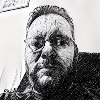Home
(80) All feeds
Last 24 hours
Download OPML
Annie
bgfay
Bix Dot Blog
Content on Kwon.nyc
Crazy Stupid Tech
Dealgorithmed
Kev Quirk
On my Om
rebeccatoh.co
strandlines
(80) All feeds
Last 24 hours
Download OPML
Annie
*
Articles – Dan Q*
Baty.net postsbgfay
Bix Dot Blog
*
Brandon's Journal*
Chris McLeod's blog*
Colin Devroe*
Colin Walker – Daily FeedContent on Kwon.nyc
Crazy Stupid Tech
*
daverupert.comDealgorithmed
*
Human Stuff from Lisa Olivera*
jabel*
James Van Dyne*
Jim Nielsen's Blog*
Jo's BlogKev Quirk
*
Manton Reece*
Manu's Feed*
Notes – Dan QOn my Om
*
QC RSSrebeccatoh.co
*
Rhoneisms*
Robert Birming*
Scripting News for email*
Simon Collison | Articles & Streamstrandlines
*
The Torment Nexus*
thejaymo